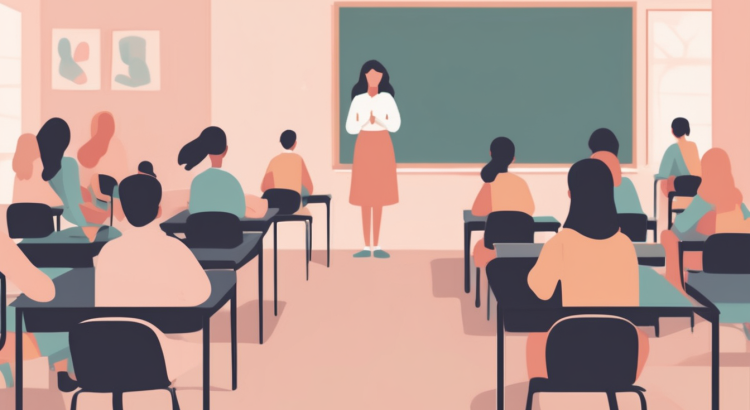Casal dels Infants – Supporting Children and Families for a Better Future reports that mindfulness sessions in classrooms are delivering measurable benefits for students across several pilot schools.
Why Mindfulness Sessions in Classrooms Matter
Early results from pilot programs show that mindfulness sessions in classrooms can reduce stress and improve attention. Teachers report calmer learning environments and fewer disruptions during lessons.
Students participate in short breathing exercises, body scans, and simple reflection practices. These structured mindfulness sessions in classrooms often last between five and fifteen minutes at the start or end of a period.
Researchers tracking these pilot schools are gathering data on behavior referrals, attendance, and academic performance. Initial comparisons suggest that mindfulness sessions in classrooms correlate with more positive classroom behavior.
Evidence from Pilot Schools and Teachers
Teachers in participating schools describe noticeable shifts in student self-control. Many say mindfulness sessions in classrooms help students pause before reacting impulsively. As a result, conflict in group work and transitions between activities appears to decline.
Surveys of students show they feel more able to focus during independent work and tests. Some indicate that mindfulness sessions in classrooms give them tools to manage anxiety before presentations or exams.
School counselors note that students increasingly use breathing techniques on their own. However, they stress that mindfulness sessions in classrooms work best when reinforced by consistent routines and adult modeling.
Impact on Focus, Behavior, and Well‑Being
Data from pilot schools highlight improvements in several areas linked to mindfulness sessions in classrooms. Office discipline referrals drop in many participating classrooms after several months of practice.
In addition, teachers report fewer off-task behaviors like side conversations and phone distractions. When mindfulness sessions in classrooms become a predictable part of the day, students appear to settle more quickly into academic tasks.
Meanwhile, self-reported well-being scores trend upward in many groups. Students describe feeling more in control of emotions such as frustration or sadness. For some, mindfulness sessions in classrooms provide a nonjudgmental pause during stressful days.
Designing Effective Classroom Mindfulness Programs
Experts advising pilot schools recommend simple, consistent structures for mindfulness sessions in classrooms. They suggest starting with very short practices, then gradually extending the duration as students grow comfortable.
Programs often include age-appropriate scripts, audio guides, or visual cues. Younger children may respond best to movement-based activities, while older students can handle longer periods of quiet reflection during mindfulness sessions in classrooms.
On the other hand, implementation works best when teachers receive training and support. Professional development sessions explain how mindfulness sessions in classrooms intersect with social-emotional learning, trauma-informed practices, and classroom management.
Read More and Wider Context
Schools exploring this approach can learn from districts that have implemented similar initiatives at scale. Read More: How to teach classroom mindfulness with simple daily routines
These examples show how mindfulness sessions in classrooms can align with existing academic goals rather than compete with instructional time. As a result, schools see the practice as a support, not a distraction.
Challenges, Equity, and Practical Concerns
Despite encouraging data, mindfulness sessions in classrooms also raise practical and ethical questions. Some educators worry about losing instructional time in already crowded schedules.
Therefore, pilot schools often integrate practices into transition moments or brief openings, rather than carving out long new blocks. Short but consistent mindfulness sessions in classrooms seem to offer benefits without significantly reducing teaching minutes.
Equity concerns also arise. Programs must be culturally sensitive and voluntary, respecting diverse family beliefs. Clear communication with caregivers about the secular nature of mindfulness sessions in classrooms helps build trust.
Digital Tools Supporting Mindfulness in Schools
Several platforms now provide guided audio, timers, and lesson plans for mindfulness sessions in classrooms. These tools help teachers who feel unsure about leading practices themselves.
Some apps track student check-ins on mood and energy, allowing staff to notice patterns. After that, schools can adjust schedules or support based on when students most need mindfulness sessions in classrooms.
Nevertheless, experts caution against overreliance on technology. They argue that the core value of mindfulness sessions in classrooms lies in real-time human presence, modeling calm attention and empathy.
Promising Direction for Future School Practice
As evidence accumulates, more districts are considering how to scale mindfulness sessions in classrooms beyond pilot sites. Many are starting with small cohorts of interested teachers, then expanding based on results and feedback.
Families, teachers, and students continue to share stories of reduced stress and better relationships. These experiences, combined with emerging research, strengthen the case for thoughtful, well-supported mindfulness sessions in classrooms.
Looking ahead, educators and policymakers will refine training, equity guidelines, and assessment tools. With careful design, mindfulness sessions in classrooms may become a stable element of school culture, helping students navigate academic demands and emotional challenges with greater resilience.



